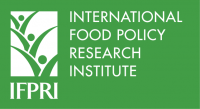
Just as the sun rises and sets, food price volatility—the variation in food prices over time—is a given these days. Once unexpected price instabilities have now become routine in the era following the food crisis of 2007-2008. For poor households, which spend more than 60 percent of their income on food, price shocks are, indeed, shocks to a struggling family’s bottom line. For example, farmers find it difficult to know what type of crop and how much of it to plant, leading to shortages and lost incomes. And when food becomes increasingly unaffordable, it is often women and children who go hungry first.
In a new research brief, How Volatile are African Food Prices? , IFPRI Senior Research Fellow Nicholas Minot asks whether or not price instability intensified in African countries in the years following the food crisis. Though African domestic markets are typically more volatile than the international market, have they become more unpredictable since 2007 or is it merely an illusion fed by misinformation and speculation?
To explore the question at hand, IFPRI’s analysis considered the prices for 10 staple foods: beans, bread, cooking oil, cowpeas, maize, millet, rice, sorghum, teff, and wheat and studied the shifts in 67 prices in 11 countries from January 2003 to December 2010.
Minot’s research yielded some unexpected results. While it was indeed the case that volatility in the international markets ramped up since 2007, he found no evidence to support the claim of a similar volatility surge in the African markets during the same time period. Though volatility of maize and rice prices increased in some countries, for the majority of commodities, volatility substantially decreased or held constant.
And, it turns out, all crops weren’t created equal: Processed foods, such as bread, and cooking oil offered the most stable prices. Drought-resistant crops, such as rice, and wheat, and tradable crops such as teff and millet also appeared to be insulated from price dips and spikes, and larger cities fared better than smaller. Perhaps most surprising was the finding that price volatility was actually highest in countries such as Kenya, Malawi, Zambia, and Zimbabwe where governments have attempted to stabilize prices by buying and selling staple crops, such as maize! This surprising result may be explained by the uncertainty that government purchases and sales introduce into local grain markets.
So what does this mean for food policy moving forward? First and foremost, the study raises questions about the effectiveness of government food price stabilization programs, and suggests that policymakers should prioritize productivity-increasing investments over stabilization programs. “Food price volatility remains an issue, but it is arguably no more of an issue now than it was before the global food crisis of 2007–2008,” wrote Minot. That’s not to say volatility is not a concern, however, particularly because price jolts are considerably more severe and frequent in African countries than in the international market. The study emphasized the importance of access to information on crop stocks and prices as well as a continued commitment to social safety-net programs to assist the most vulnerable when prices spike.
For more on this topic, see Nicholas Minot’s full discussion paper on food price volatility, Food Price Volatility in Africa: Has it Really Increased?.
